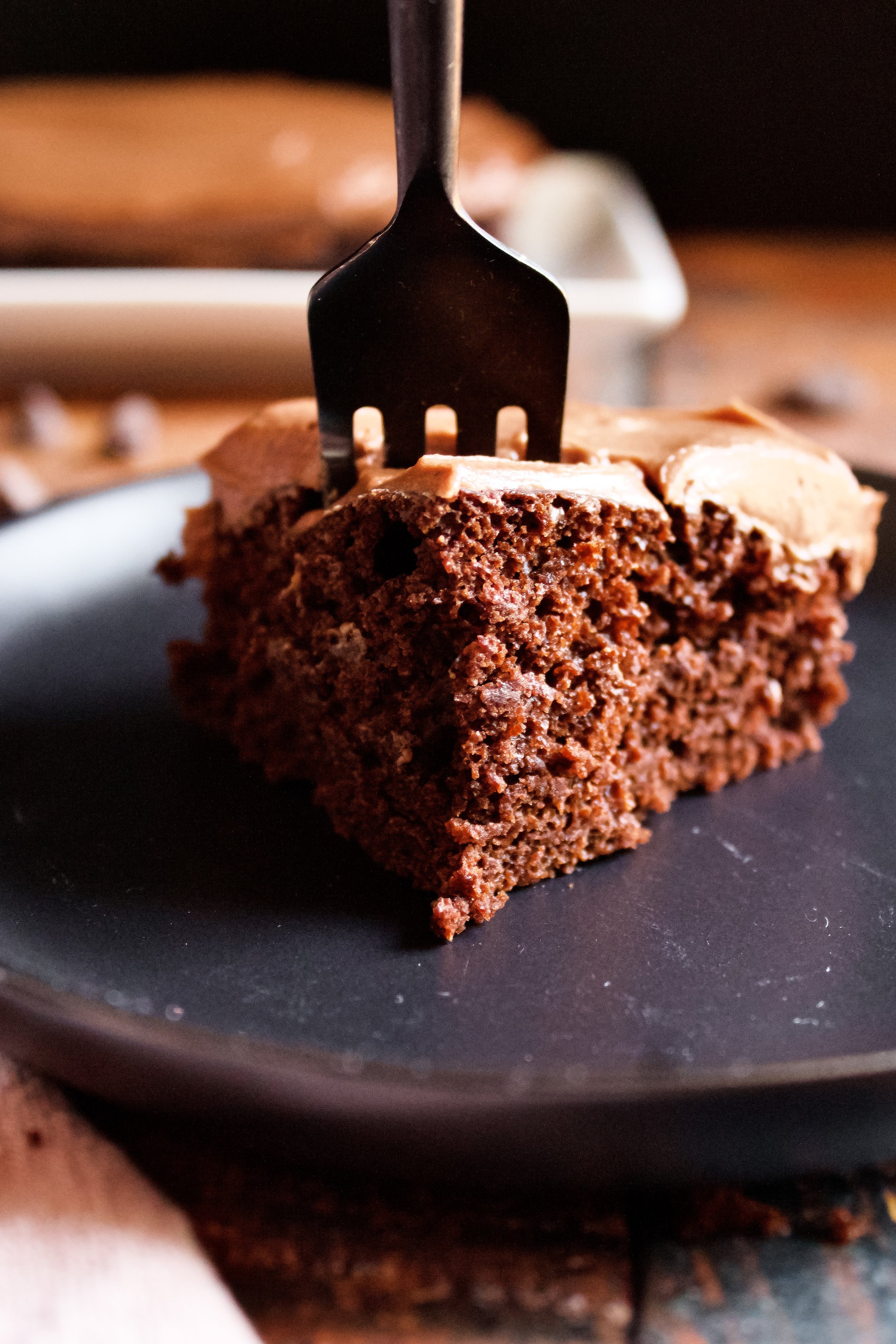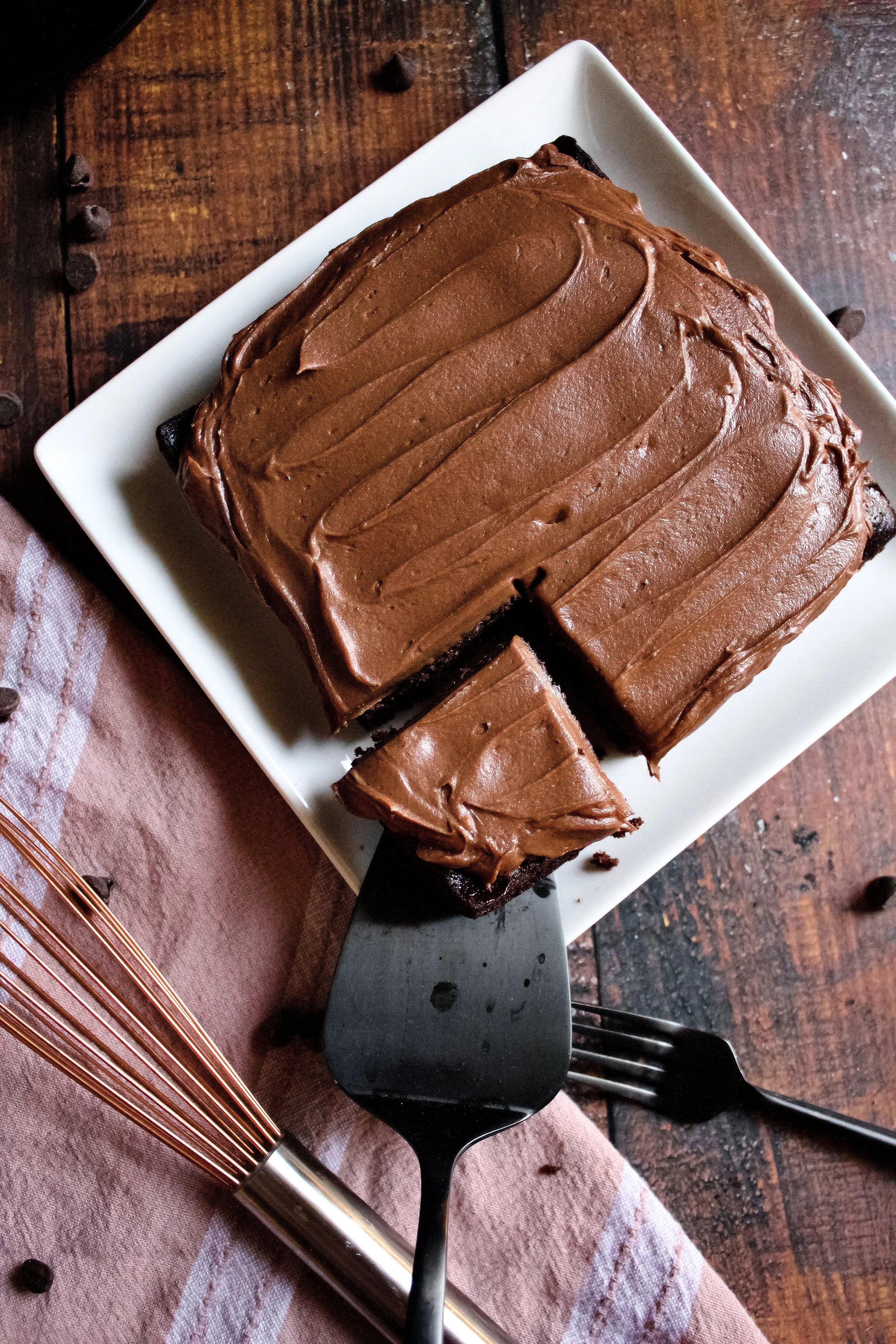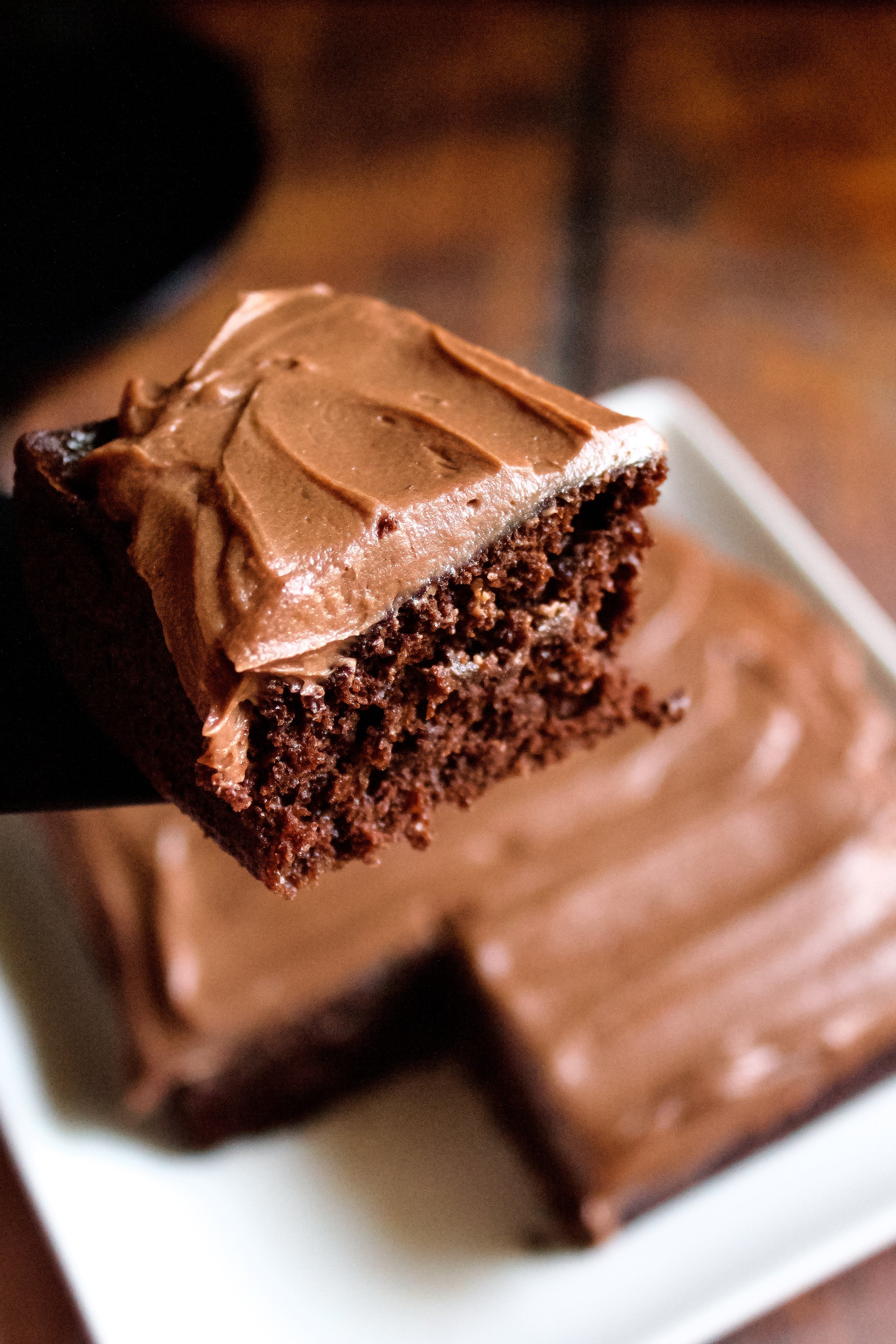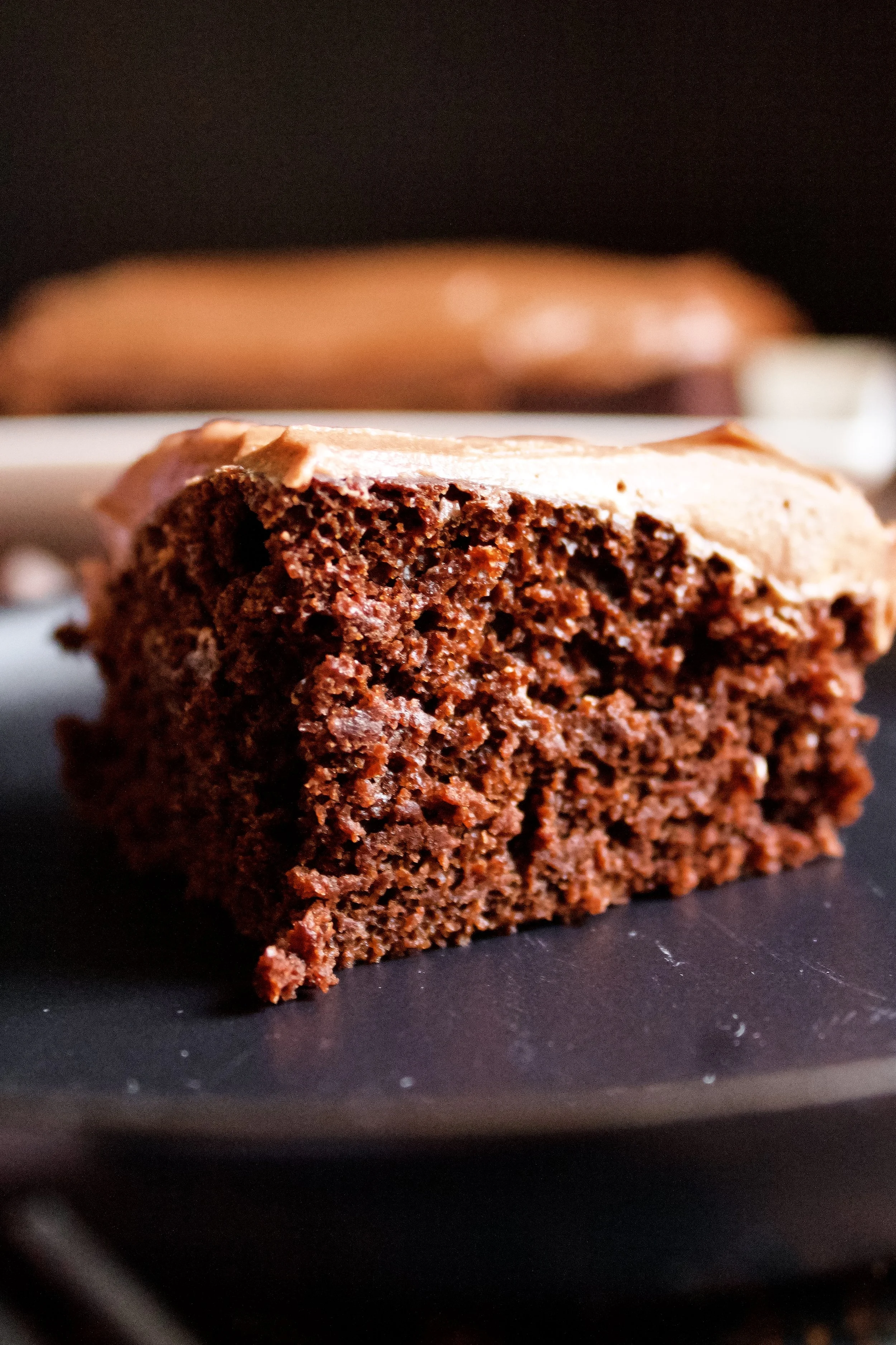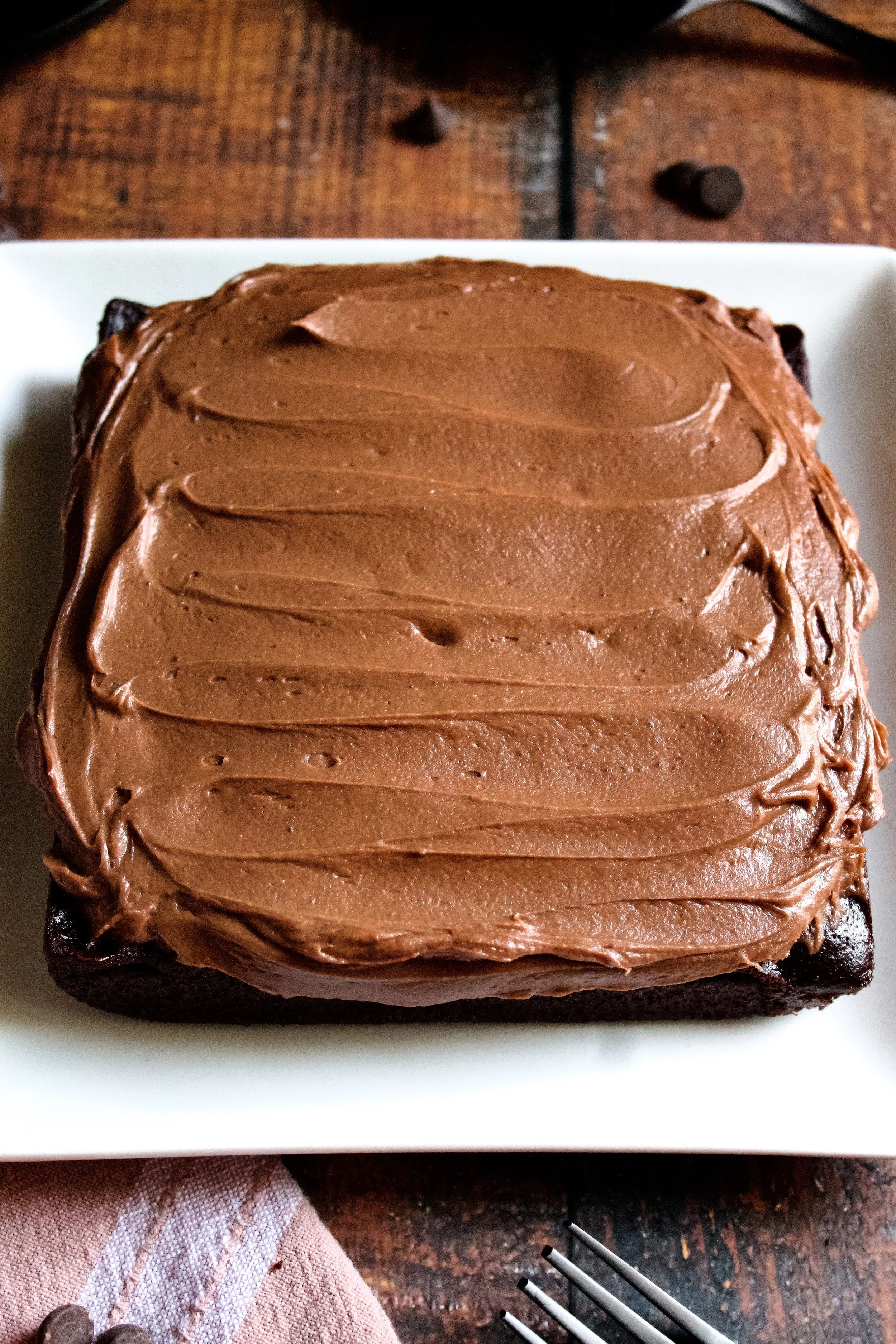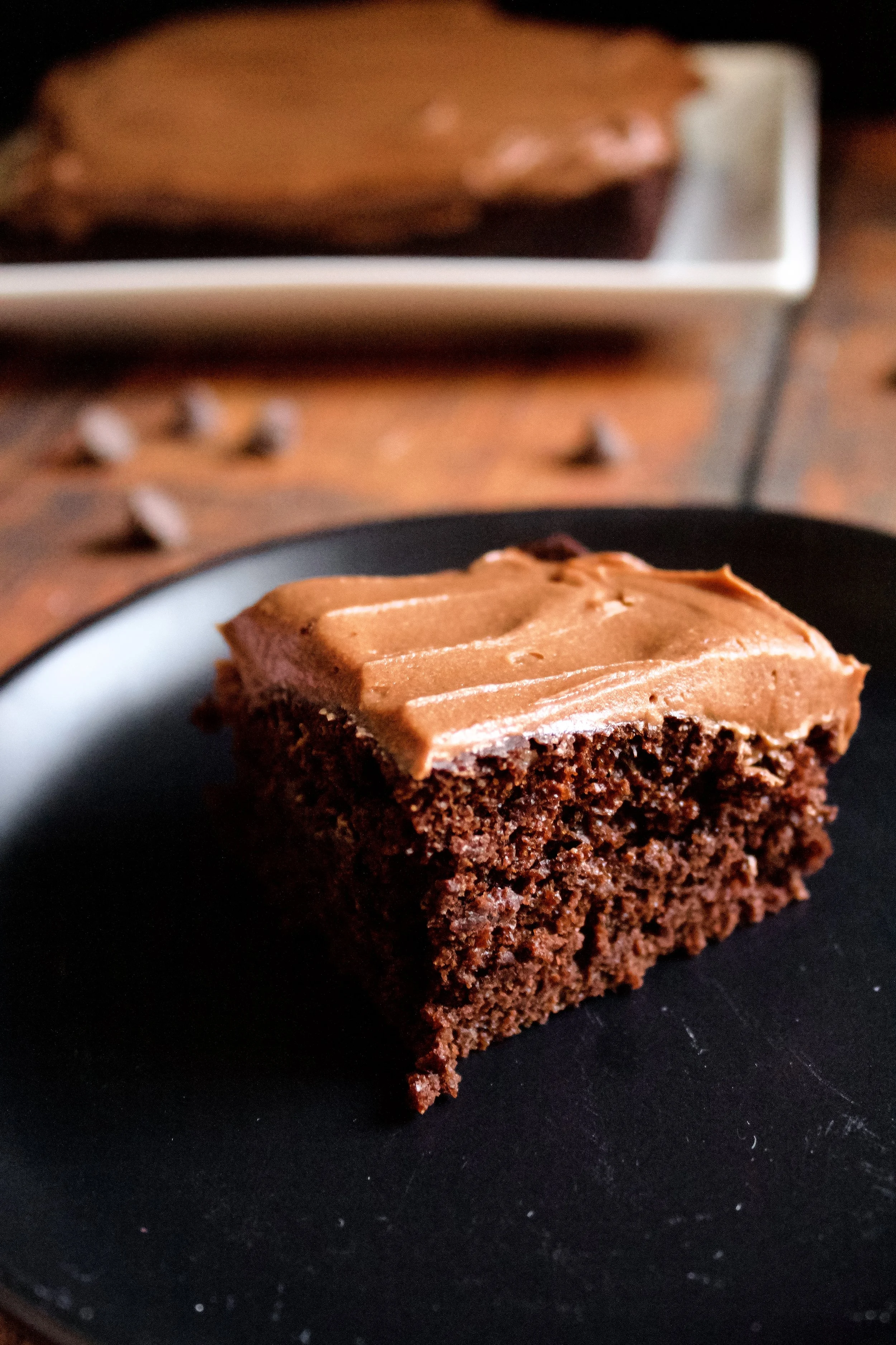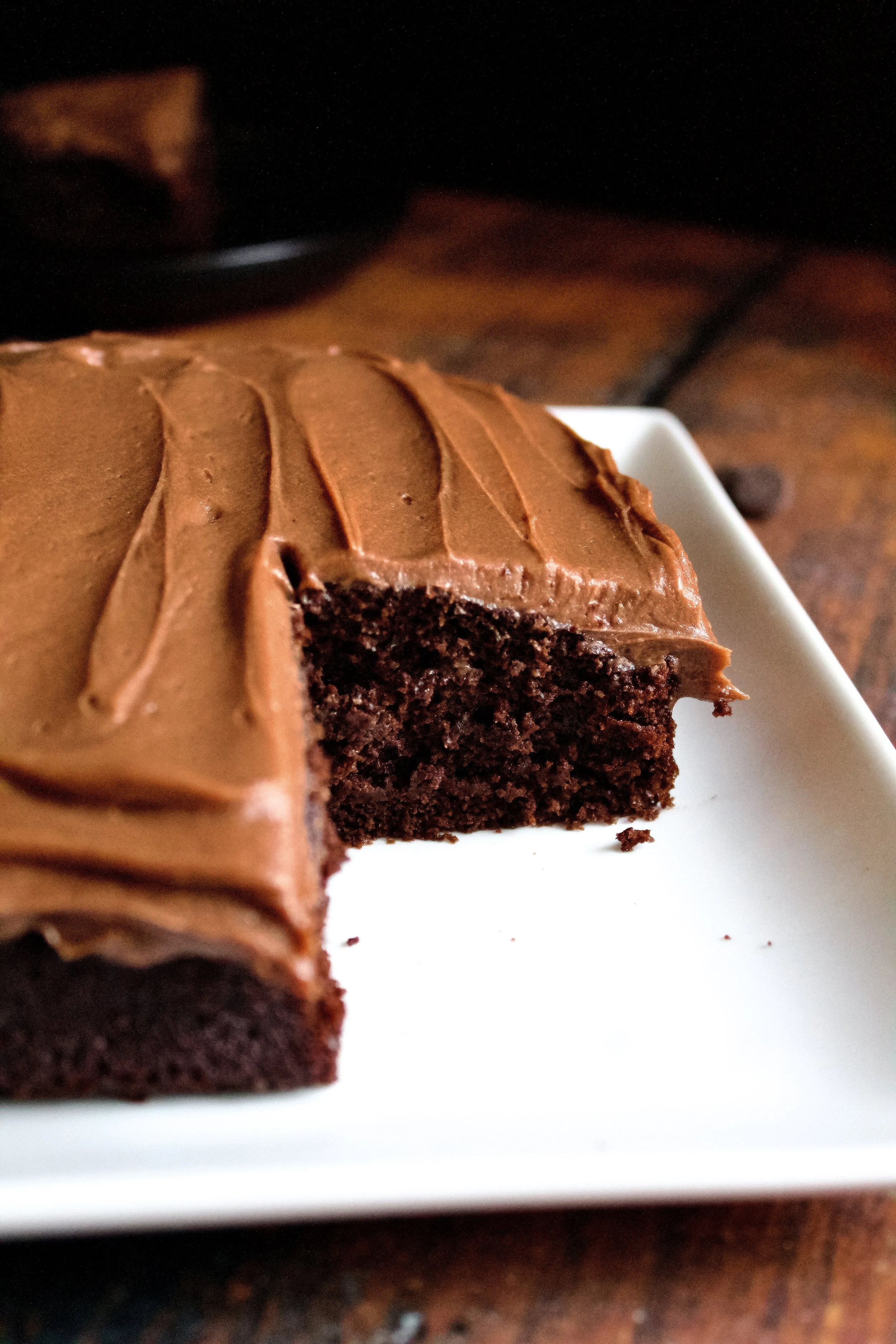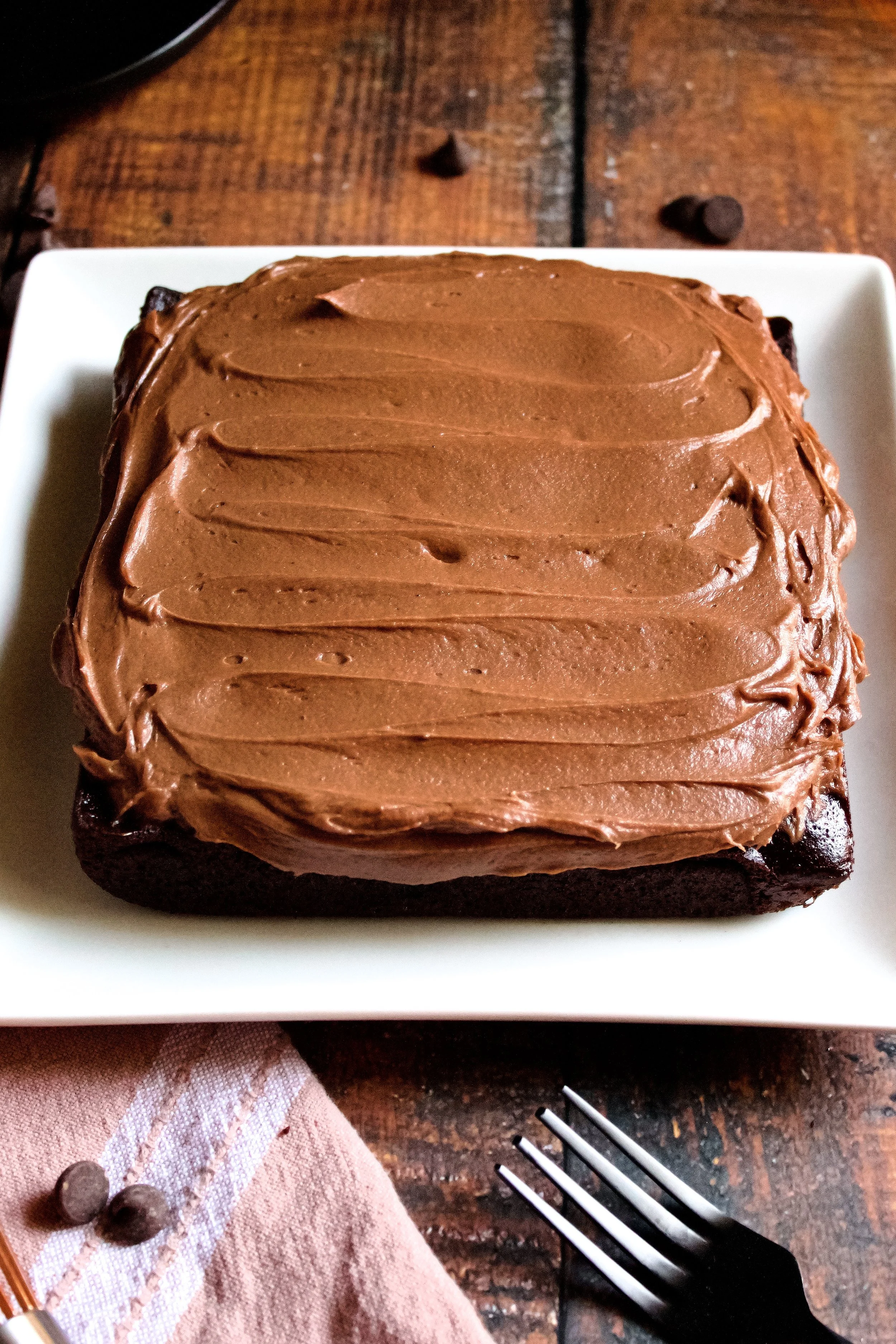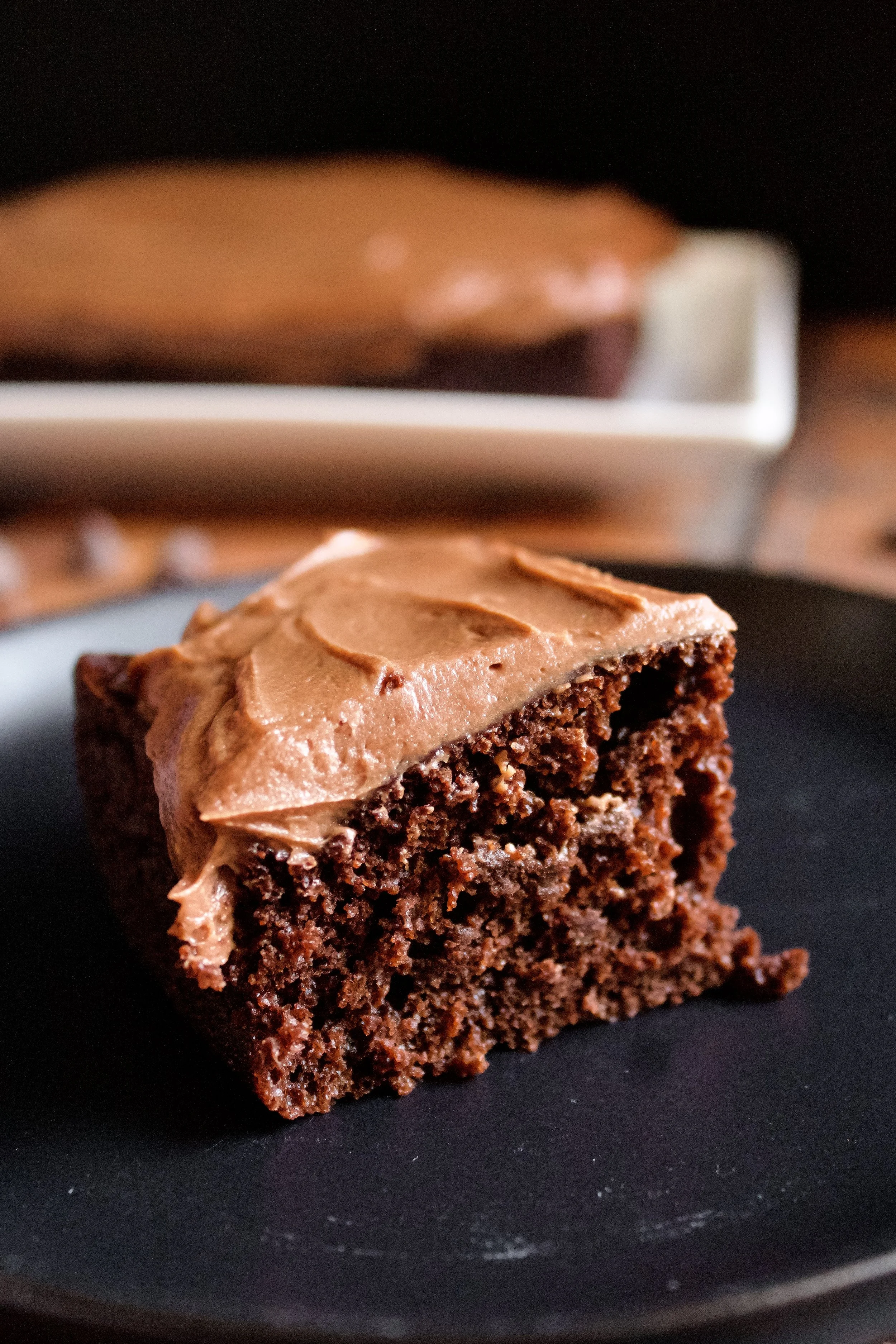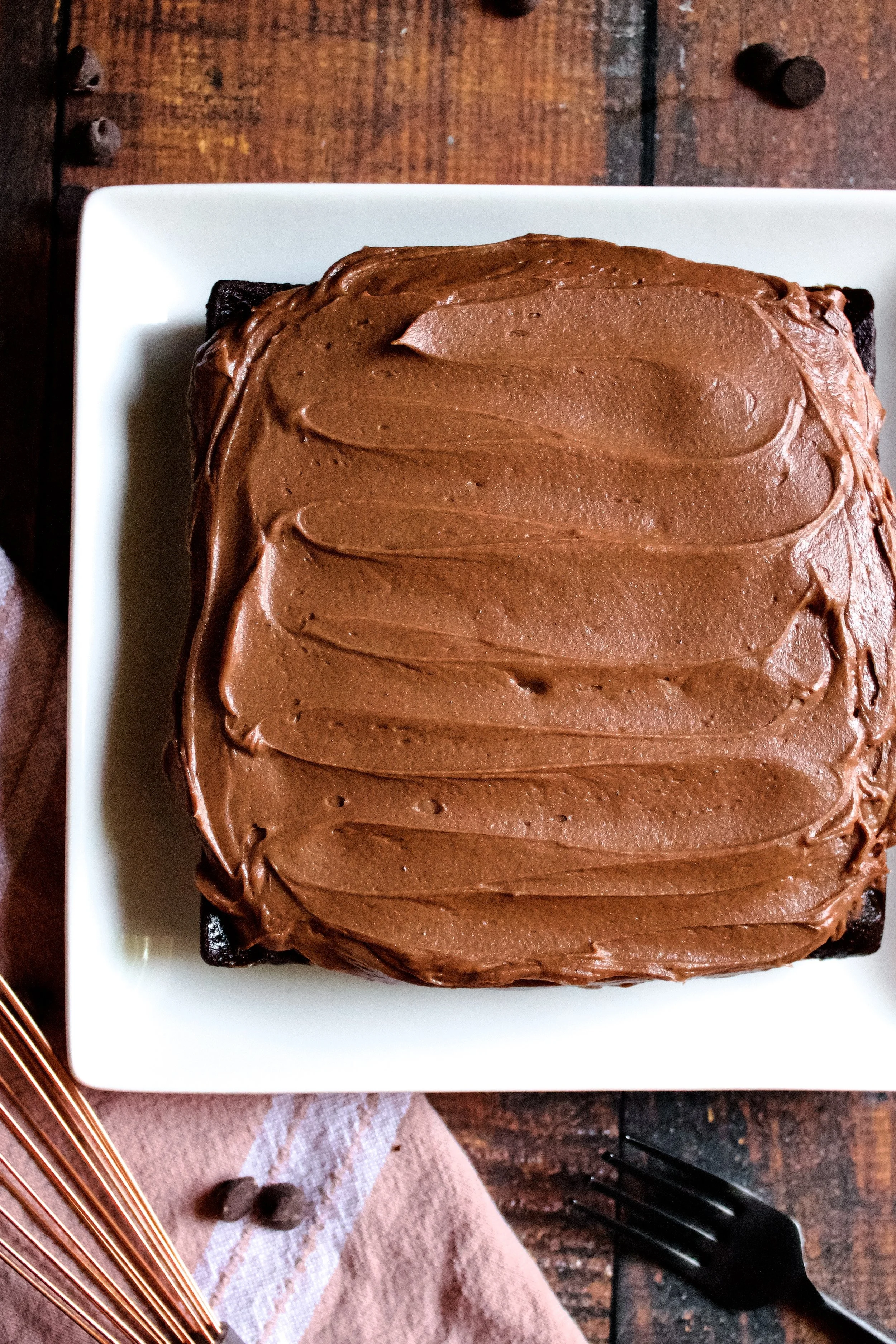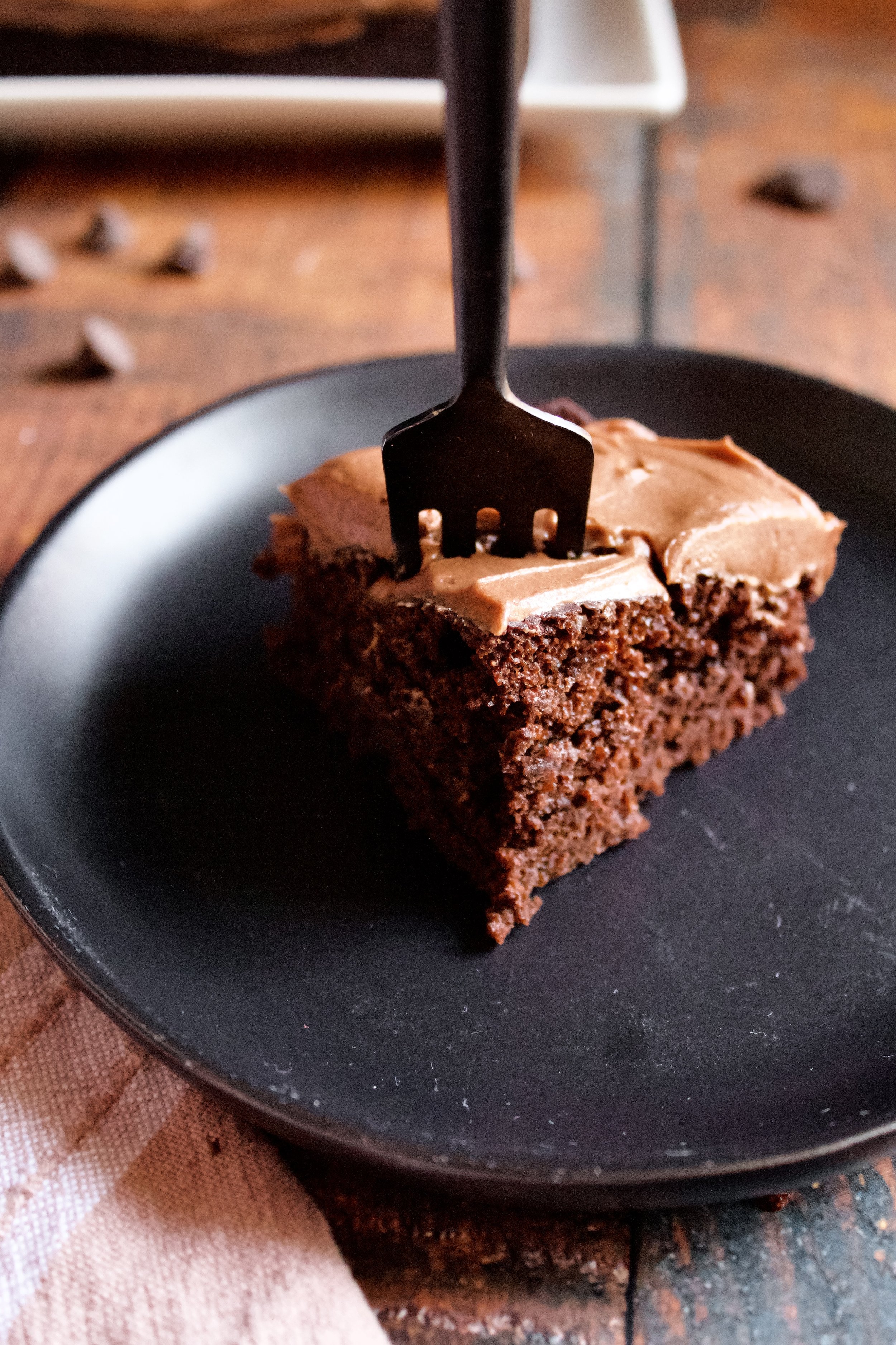Sourdough Discard Chocolate Cake
Fluffy, rich chocolate cake with a secret ingredient: sourdough discard! Use up that discard and add a bit of health to this fan-favorite cake, making it even richer and flavorful.
This post may contain affiliate links from which, at no additional cost to you, I may earn a small commission to keep this site running. Only products I myself would or do use are recommended.
FYI, If you’re new to the world of sourdough, check out this post about creating a starter and this post about maintaining a starter. And before baking your first loaf, you may want to check out this post all about levains. And, if need be, check out this post about troubleshooting a sourdough starter. And most importantly, try out my simple, easiest sourdough recipe here!
I will be honest: I don’t make many sourdough discard recipes. I tried to, but I kept getting busy and didn’t feel like experimenting and having all these failed attempts gone to waste and I really didn’t want to have that much extra food around all the time because you have to feed a sourdough daily, meaning you have discard daily.
So I devoted my sourdough energy to loaves and really perfecting technique and flavors.
But then, about a year ago, I got an idea. I’d read and tried some delicious discard recipes from bakers I trusted. And It helped me better understand the science behind using discard in a recipe. So I got the idea to convert my beloved chocolate cake to include a bit of sourdough discard.
Wow. Just, wow.
It somehow made it a little denser—in a good way—yet still fluffy. And the flavor actually was enhanced by the discard. Dare I say, it’s even better than the original.
Why this recipe works
Adding discard means you’re adding a bit of liquid and a bit of flour. However, you can’t just swap out exact amounts of flour and liquid. It takes a bit of math (for example, 100g of starter has 50g flour and 50g water) and a bit of experimentation. I found that removing a bit of the coffee and flour in the original recipe accounted for adding quite a bit of discard—far more in weight than what I’d removed.
Somehow, the bready-ness of the discard worked its way through the cake, making it fluffy and helping it retain its moisture. This cake somehow becomes both dense and fluffy at the same time—making it very sturdy and reliable for stacking.
Best of all, that gut-healthy sourdough is packed into this cake, making it a “healthier” variety of cake AND a great way to use up that hard-earned starter!
Key ingredients
Sourdough discard. You can use active starter or discard (meaning it’s past it’s peak bubbly period). If you don’t have a starter, this post can walk you through how to create one!
Flour. Be sure to spoon then level your flour so you don’t pack it in, and always sift with a fine mesh sieve!
Cocoa powder. Sifting this is a must, as it tends to clump. Be sure you use unsweetened cocoa. Regular is preferred, but Dutched will work as well.
Sugar. Obviously! You’ll need this in the cake as well as the caramel sauce.
Baking powder/soda. Both are needed to help the cake rise properly. Be sure they haven’t been open longer than a few months or they do start to lose their umph, regardless of the indicated expiration date. And be sure they’ve been well-sealed! Any moisture getting in will stop them from working properly.
Salt. Again, needed in all elements of this cake. I highly recommend sea salt, as it helps complement the sweetness better.
Buttermilk. I always make my own by adding 1 tablespoon white vinegar to a 1 cup measuring cup. I then fill it the rest of the way with room-temperature whole milk.
Oil. I prefer avocado or grape seed oil, as they are light and tasteless but still heart-healthy. Vegetable or canola oil work, too.
Eggs. Use fresh, large eggs and make sure they have reached room temperature.
Vanilla. Always use pure extract in baking, not imitation.
Hot coffee. Be sure your coffee is piping hot when you use it. You can make it as strong or light as you’d like. I prefer blond coffee in most cakes, but you really can’t taste it if you use a dark roast. It just serves to bring out a more intensely dark chocolate flavor.
How to make sourdough discard chocolate cake
1. Sift and whisk dry ingredients. Don’t skip the sifting! It’s key to making this cake nice and fluffy.
2. Whisk eggs, buttermilk, oil, vanilla, and starter. Whisk very well to fully emulsify (blend) it all, especially the eggs and oil.
3. Slowly whisk hot coffee into wet ingredients. Whisk very quickly and pour slowly to avoid scrambling the eggs. If you do think you scrambled some, you can run it through your fine mesh sieve.
4. Slowly stir wet ingredients into the dry. Do this on low and immediately stop and scrape the bowl once everything is combined.
5. Beat on medium for exactly 2 minutes. Set a timer so you don’t under or over mix.
6. Bake. Bake until a toothpick or cake tester comes out with just some moist crumbs—not fully clean, as this can mean it’s over baked. Remember that it continues to bake a little when you take it out of the oven.
7. Frost as desired. I love this with any of my chocolate frostings, especially my chocolate ganache buttercream!
Enjoy!
Tips and FAQ’s for this recipe
How do I build up that much discard?
I personally keep my starter small. It does best on the counter, being fed once a day, but I don’t actually bake with it once a day. So, I do a 1:4:4 ratio (10g starter, 40g water, 40g flour). Each day, I discard 80g, which is minimal and not as wasteful. So, if I want to make a discard cake, I don’t have to bulk up my starter (like I might if making several loaves of sourdough, which I’ve done before). Instead, each day I save my discard instead of tossing it in the compost. Just put it in a sealed container (like a Pyrex or jar with a lid) in the fridge. Keep adding to it each day when you feed your starter, for about 3-4 days. That should give you enough for this recipe. Discard keeps in a sealed container in the fridge for up to 2 weeks (since you started saving it).
Do I have to use coffee in the cake?
Probably. You could technically use just hot water, but I have never been a fan of how this cake tastes without coffee. Trust me, you will not taste the coffee if you use light roast. If you’re worried, you can make it half strength, which should be enough to bring out the chocolate flavor.
Measure dry ingredients carefully
Always spoon flour and cocoa into your measuring cup then level with the back of a knife or other straight edge. And be sure to sift with a fine mesh sieve so your cake is nice and fluffy.
Sift your dry ingredients
Sifting dry ingredients is KEY in baking, especially for baking cakes and extra important with chocolate cakes. You always want to ensure the cocoa is sifted because it can create little pockets of cocoa that never get mixed in and thus don’t bake. The one time I made this cake without sifting the dry ingredients, it turned out dense and chewy and just not good. So trust me—sift!
Use room temperature ingredients
This is another baking must. Room temperature ingredients (when called for) are non-negotiable. I have seen the difference in cakes that are tough and don’t rise. Plan ahead and make sure your ingredients have had time to sit out.
Use quality cocoa
Since cocoa is the main flavor here, you want a good brand. Opt for something organic and fair trade, if possible, because this usually means it was produced in smaller batches and thus higher quality and is often fresher, too. Plus, the flavor of the high quality cocoa is always noticeable in the brownies. My go-to is Volupta, from Costco, but some other good options are Ghirardelli, Guittard, Scharffen Berger, Anthony’s, or even Hershey’s Special Dark in a pinch.
My tools
Here are my must-have tools I use for making this cake. Affiliate links provided.
Mesh sieve (because sifting is KEY for a fluffy cake)
All-rubber spatula (this makes scraping the bowl easier so the batter and frosting doesn’t get all over a wooden handle!)
Silicone liners for 8” cake (or for 6” cakes)
8” aluminum cake pans or 6” aluminum cake pans (I’ve found nonstick doesn’t bake as evenly)
Offset spatula (for frosting the cake)
You might also like:
Feel free to sub this cake for the regular chocolate cake in ANY recipe! It’s just as moist, fluffy, and delicious, but is sturdier!
Chocolate Raspberry Mousse Cake
Chocolate Caramel Marshmallow Cake
Sourdough Discard Chocolate Cake
- prep time: 10-15 minutes (plus time to make the frosting)
- bake time: 25-30 minutes (longer if using a 9x13)
- total time: 45 minutes (plus cooling time)
servings: 12-16
Ingredients:
- 1 ⅔ cups (333g) granulated sugar
- 1 ¼ cups (170g) flour, sifted
- ¾ cup (75g) unsweetened cocoa or cacao powder, sifted
- 2 teaspoons (8g) baking powder, sifted
- 1 teaspoon (5g) baking soda, sifted
- ½ teaspoon (3g) fine ground Himalayan sea salt (or 1 teaspoon table salt, but sea salt gives a better flavor)
- 2 large eggs, room temperature
- 1 cup (240g) buttermilk*, room temperature
- ½ cup (120g) avocado or olive oil
- 1 tablespoon (13g) pure vanilla extract
- 240g sourdough discard (can also use “active” starter, but not necessary)
- ¾ cup (180g) very hot coffee (light or dark roast is fine)
- chocolate ganache buttercream (or frosting of choice)
Instructions:
- If you keep your sourdough starter small (or you discard less than 240g of starter at each feed), you’ll need to either save up your discard from a few feeds (until you have at least 240g discard) or you can bulk up your starter so that you’ll have 240g to make this cake. If using the first option, simply place each day’s discard into a sealed container in the fridge, adding to it daily until you have 240g. This will last 2 weeks from the first time you added discard to your container.
- Preheat your oven to 325F/165C. Lightly grease and flour two 8” or 9” cake pans or three 6” cake pans (or use baking spray) and line the bottom with parchment paper or silicone baking mats. You can also use a 9x13 pan and make a snack style cake. This is also a great time to set your coffee to percolate (unless using hot water or espresso and hot water, which is what I do).
- In the bowl of stand mixer (or large bowl), use a large fine mesh sieve to sift and whisk together sugar, flour, cocoa, baking powder, baking soda, and salt, being sure to sift as instructed. I prefer using a hand whisk for this step as the whisk attachment doesn't always get the very bottom mixed in. Fit this to your stand mixer with the paddle attachment. You can also use a large mixing bowl with a hand mixer. * I also like to make my coffee at this time so it’s fresh and hot.
- In a separate bowl, whisk together eggs, buttermilk, oil, vanilla, and sourdough discard. Whisk until very well blended.
- VERY slowly, pour coffee mixture into the egg mixture, whisking the eggs quickly and constantly to avoid scrambling them. Feel free to do it in increments if this is your first time.
- Turn mixer to low. Slowly pour wet ingredients into dry. It will clump up halfway through then settle into a liquid-y consistency. Immediately turn off mixer once all ingredients are combined then scrape down sides with a rubber spatula, making sure to get to the very bottom. Beat on medium for exactly 2 minutes. Do not overmix!
- Pour batter evenly into prepared pans. Gently tap pans on the counter a couple times to get some of the bubbles out.
- Bake for 25-30 minutes (30-40 if using a 9x13 pan), until a toothpick inserted in the middle comes out with some moist crumbs but no raw batter. Always check cakes a little early, as oven time can vary. If not using a convection oven, rotate cakes halfway through.
- Cool in pans 5-10 minutes then remove to a cooling rack until completely cooled.
- While the cakes cool, make your desired frosting. Once the cakes are cool, frost as desired.
Enjoy!
Seal leftover cake with a piece of plastic wrap placed right against the cut edges and “seal” it by pressing against the buttercream along the edge. Then core in another layer of plastic wrap or store in an airtight cake container.
*You can make your own buttermilk by adding 1 tablespoon of white vinegar to a 1 cup measuring cup then filling the rest of the way with room temperature whole milk. Stir and let sit 5-10 minutes.

